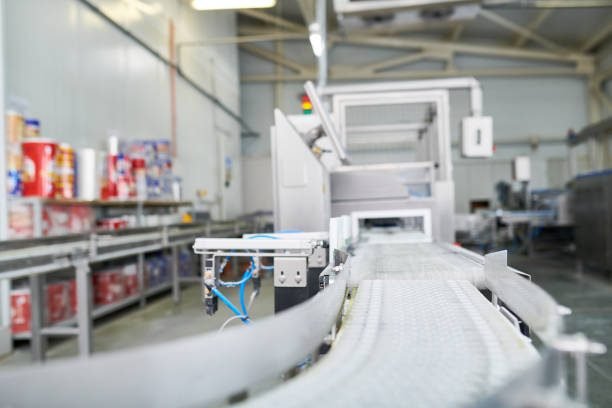In today’s fast-paced food production environment, ensuring product safety and quality is more critical than ever. While metal detectors have long been the industry standard for identifying physical contaminants, modern manufacturers are increasingly turning to food X-ray machines for a more comprehensive inspection solution.
What Is a Food X-Ray Machine?
A food X-ray machine is a non-destructive inspection system that uses X-ray technology to detect and reject physical contaminants in food products. These machines can identify a wide variety of foreign materials, including:
- Metal (ferrous and non-ferrous)
- Glass
- Bone
- Rubber
- Stones
- Dense plastics
Unlike metal detectors, which are limited to conductive materials, X-ray systems detect differences in density and mass within a product, making them far more versatile.
Basic Principles of X-Ray Technology
To understand how food X-ray machines work, it helps to grasp the basic science behind X-rays.
X-rays are a form of electromagnetic radiation, similar to visible light but with much shorter wavelengths. Because of their high energy, X-rays can penetrate through objects and are absorbed at different rates depending on the density and composition of the material.
In a food inspection setting, this property is used to spot foreign objects that have different densities than the product itself.
How X-Ray Inspection Systems Detect Contaminants
A typical food X-ray machine consists of the following components:
- X-ray Generator (Tube): Produces a controlled X-ray beam.
- Product Conveyor: Moves the food item through the inspection area.
- Detector (Sensor): Captures the X-rays after they pass through the product.
- Image Processor: Converts the data into a digital image for analysis.
- Reject Mechanism: Automatically removes contaminated products from the line.
Step-by-Step Operation:
- Product Enters the X-Ray Tunnel: The food item, whether packaged or unpackaged, travels on a conveyor belt into the X-ray inspection tunnel.
- X-Ray Beam Emission: The X-ray generator emits a narrow beam of radiation downward or sideways, depending on the system’s configuration.
- X-Rays Pass Through the Product: As the X-rays pass through the food, they are absorbed to varying degrees based on the density and composition of the materials inside.
- Detection and Image Creation: The X-rays that exit the product are captured by a digital detector. The detector converts the energy into electrical signals, which are then processed to create a grayscale image of the product’s internal structure.
- Analysis and Decision: The machine’s software analyses the image using advanced algorithms. If a foreign object is detected—identified by a sharp contrast in density—it triggers the reject system to remove the product from the production line.
What Can Food X-Ray Machines Detect?
One of the biggest advantages of X-ray technology is its ability to detect non-metallic contaminants that metal detectors can’t catch.
Common foreign objects detected by X-ray systems include:
- Stainless steel shards, even when embedded in metalised packaging
- Glass pieces, especially in glass containers or jars
- Stones that may be present in fruits, grains, or nuts
- Bone fragments, often found in meat or poultry
- Hard plastic or rubber, from gaskets, scoops, or packaging equipment
This broad detection range makes X-ray machines especially useful in complex processing environments and where high-risk ingredients are involved.
Types of Food X-Ray Systems
Different configurations of X-ray inspection machines exist to suit various products and production environments:
- Conveyor-Based X-Ray Systems
Ideal for packaged or bulk products, these are the most common systems used for checking items as they move along the production line.
- Pipeline X-Ray Systems
Designed for liquid or paste-like products such as sauces, soups, or dairy processed through pipelines. They detect contaminants before packaging.
- Vertical X-Ray Systems
Used for tall or irregular-shaped containers such as cans, bottles, and jars.
- Multi-Lane X-Ray Systems
Can inspect multiple lanes simultaneously, improving inspection speed and throughput.
Each system is tailored to specific product characteristics, including density, size, and packaging material.
Beyond Contaminant Detection: Additional Benefits
Modern food X-ray machines offer more than just foreign object detection. They also help manufacturers:
Check for Product Integrity
X-ray systems can identify:
- Missing or broken components (e.g., a missing cookie in a pack)
- Underfilled or overfilled packages
- Damaged seals
- Clumping or product misplacement
Improve Quality Control
X-ray images are archived for traceability, helping you investigate complaints or issues quickly.
Comply with Regulations and Standards
Meeting requirements from regulatory bodies like HACCP, BRCGS, SQF, and FSMA is easier with automated, documented X-ray inspections.
Is X-Ray Inspection Safe for Food?
Yes, X-ray inspection is completely safe for food products and for consumers. The radiation dose used in food X-ray machines is extremely low—typically lower than natural background radiation levels encountered during a flight or a sunny day outdoors.
Moreover, food X-ray machines are designed with shielded enclosures and safety interlocks to protect operators from exposure. Systems are subject to strict international radiation safety standards (e.g., FDA, CE, and IEC).
Maintenance and Calibration
To keep an X-ray system running efficiently and accurately:
- Perform routine calibration to maintain sensitivity
- Clean detectors and conveyors regularly
- Conduct validation tests using certified test cards
- Schedule annual service checks with qualified technicians
Proper maintenance ensures consistent performance and extends the life of the machine.
Conclusion: A Clearer View of Product Safety
Food X-ray machines are a powerful asset in the modern production line. They offer unmatched versatility, allowing for the detection of a wide range of contaminants and quality issues that metal detectors simply can’t catch.
By using density-based imaging, digital processing, and automated rejection, these machines improve food safety, streamline quality control, and enhance consumer trust—all while supporting regulatory compliance.
If you’re in the food industry and looking to enhance your inspection capabilities, investing in an X-ray inspection system could be the most impactful decision you make.

